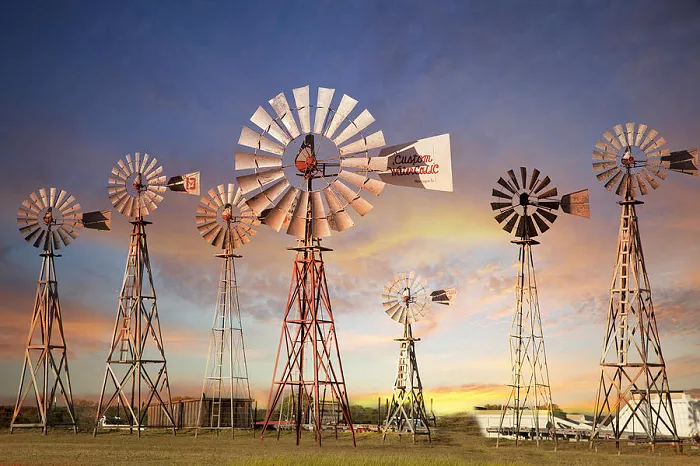Texas, known for its vast landscapes and strong winds, has become a leader in wind energy production in the United States. The state’s commitment to harnessing wind power has transformed its energy landscape, contributing significantly to both the local and national economy.
Windmills, or wind turbines, are structures that convert wind energy into electricity. In Texas, these turbines are a common sight, especially in regions like the Panhandle and West Texas. The proliferation of windmills in Texas is the result of a combination of natural resources, strategic planning, and supportive policies.
Texas’s Ideal Conditions for Wind Energy
Texas’s geography and climate provide optimal conditions for wind energy generation. The state’s expansive plains and open spaces experience consistent and strong winds, particularly in areas like the Panhandle and West Texas. These regions are part of the “wind belt,” a zone known for its high wind speeds, making them ideal for wind turbine installations.
Early Investments and Infrastructure Development
In the early 2000s, Texas recognized the potential of wind energy and began investing heavily in infrastructure. The state established Competitive Renewable Energy Zones (CREZ) to facilitate the transmission of wind power from remote areas to urban centers. This strategic planning led to the construction of extensive transmission lines, enabling efficient delivery of wind-generated electricity across the state.
Supportive Policies and Renewable Portfolio Standards
Texas implemented policies that encouraged renewable energy development. The Renewable Portfolio Standard (RPS), established in 1999, initially set a goal of adding 2,000 megawatts (MW) of new renewable energy capacity by 2009. This target was later increased, and by 2010, Texas had achieved 10,000 MW of renewable energy capacity, 15 years ahead of schedule.
Economic Benefits and Job Creation
The wind energy sector has brought significant economic benefits to Texas. As of 2022, the industry employed over 26,000 people, with an average annual wage of approximately $109,826. The presence of wind farms has also boosted local economies through tax revenues and land-lease payments to farmers. For instance, the Roscoe Wind Complex has contributed over $92 million in local taxes since 2008.
Environmental Impact and Clean Energy Goals
Wind energy is a clean, renewable resource that helps reduce greenhouse gas emissions. In 2024, wind and solar farms contributed to 29.8% of Texas’s electricity production, with wind generation typically peaking from March through May due to sustained wind speeds. This shift towards renewable energy sources aligns with global efforts to combat climate change.
Major Wind Farms in Texas
Texas is home to several large wind farms that play a crucial role in the state’s energy production. Some of the largest include:
- Los Vientos Wind Farm: Located in Starr and Willacy counties, this farm has an installed capacity of 912 MW.
- Roscoe Wind Complex: Spanning four counties, it features 627 turbines with a capacity of 781.5 MW.
- Horse Hollow Wind Energy Center: Situated in Taylor and Nolan counties, it comprises 421 turbines with a capacity of 735.5 MW.
- Capricorn Ridge Wind Farm: Found in Coke and Sterling counties, it has a capacity of 662.5 MW.
- Sweetwater Wind Farm: Located in Nolan County, it consists of 392 turbines with a capacity of 585 MW.
Technological Advancements and Grid Integration
Advancements in wind turbine technology have improved efficiency and reduced costs, making wind energy more competitive with traditional fossil fuels. Texas’s independent power grid, managed by the Electric Reliability Council of Texas (ERCOT), allows for flexible integration of renewable energy sources. However, challenges such as energy storage and transmission infrastructure remain, requiring ongoing investment and development.
Future Outlook and Renewable Energy Goals
Looking ahead, Texas aims to continue its leadership in renewable energy. The state has set ambitious goals to expand its wind energy capacity, with projections suggesting that wind and solar power could account for over 30% of the state’s electricity production by 2025. This growth is expected to create more jobs, attract investment, and further reduce carbon emissions.
Conclusion
Texas’s abundance of windmills is a testament to the state’s strategic vision, favorable natural conditions, and commitment to renewable energy. The development of wind power has brought economic growth, job creation, and environmental benefits, solidifying Texas’s position as a leader in the U.S. energy sector.

